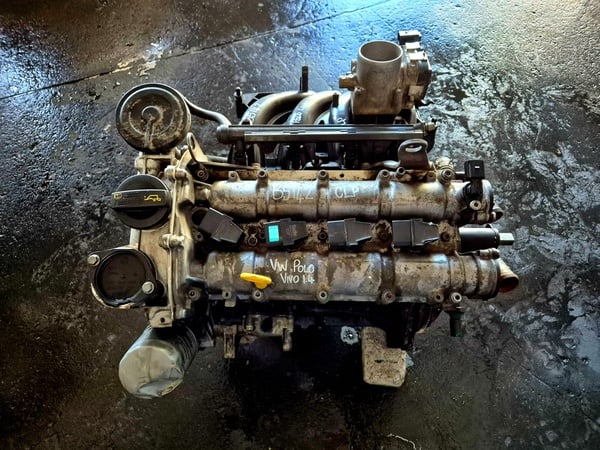Enhance productivity with a powerful clp engine.
Enhance productivity with a powerful clp engine.
Blog Article
Just How a Clp Engine Can Enhance Effectiveness in Numerous Industries
The arrival of CLP engines notes a considerable shift in operational performance throughout different markets, driven by their capability to maximize gas intake and minimize downtime. As companies significantly focus on sustainability alongside effectiveness, the duty of CLP engines ends up being also extra important.
Review of CLP Engines
CLP engines, or Constant Liquid Propellant engines, stand for a substantial improvement in propulsion technology, particularly for space applications. These engines use a continual feed system that permits the continual expulsion of propellant, bring about boosted performance and efficiency compared to conventional solid or hybrid propulsion systems. By preserving a constant flow of fluid propellant, CLP engines can accomplish a lot more accurate drive control, which is critical for maneuvering spacecraft in various objective situations.
The style of CLP engines incorporates advanced products and innovative gas administration systems. clp engine. This results in reduced weight and enhanced reliability, important aspects for long-duration area missions. The constant operation reduces the danger of combustion instability, a common obstacle in conventional rocket engines.

Advantages in Production
The production of Continuous Fluid Propellant (CLP) engines provides a number of significant advantages that enhance both efficiency and cost-effectiveness. Among the primary advantages is the streamlined production process, which reduces the intricacy related to traditional propulsion systems. By making use of liquid propellant, makers can attain higher precision in engine efficiency, resulting in enhanced energy outcome and reduced waste.
In addition, CLP engines promote a greater degree of modularity, enabling simpler assimilation into numerous manufacturing lines. This flexibility can considerably reduce lead times and boost overall functional versatility. Making use of CLP technology additionally tends to decrease the demand for extensive maintenance because of fewer relocating parts, which converts into reduced downtime and operational costs.

Applications in Logistics
Leveraging Continuous Fluid Propellant (CLP) engines in logistics supplies significant benefits in operational performance and integrity. These engines provide a durable service for different transport requirements, enabling the seamless motion of goods across huge distances. The intrinsic style of CLP engines enables constant power outcome, which equates into smoother and extra predictable transportation timetables.
Among the vital applications of CLP engines in logistics remains Discover More Here in sturdy freight transportation, where they can drive both ground and aerial automobiles. Their ability to keep high efficiency under differing lots problems makes certain that shipment timelines are met, therefore boosting client contentment. Additionally, CLP engines can be incorporated into automated logistics systems, facilitating real-time monitoring and maximizing course planning.
Furthermore, the toughness of CLP engines minimizes upkeep downtime, permitting logistics business to optimize their operational capacities. This is especially helpful in warehousing operations, where effectiveness in dealing with and transferring goods is critical. As logistics proceeds to advance, the assimilation of CLP engines stands for a forward-thinking approach that not only improves efficiency yet additionally sustains the market's growing needs for integrity and speed.
Effect on Energy Effectiveness
How do Continual Liquid Propellant (CLP) engines improve power efficiency in transportation? CLP engines use a consistent flow of fluid fuel, maximizing combustion processes and keeping a secure drive output. This design decreases energy losses related to traditional combustion engines, where fuel shipment can vary and result in inefficiencies.
The continuous operation of CLP engines permits for a much more reliable thermal cycle, resulting in greater particular impulse hop over to here compared to traditional engines. clp engine. This converts to lowered gas intake for the very same quantity of work done, dramatically lowering functional prices across numerous transport industries, including aviation and maritime sectors
Furthermore, the capacity of CLP engines to preserve ideal performance under differing load problems minimizes the demand for constant acceleration and slowdown, even more boosting fuel efficiency. Improved power effectiveness not just adds to cost savings but additionally results in decrease greenhouse gas emissions, aligning with worldwide sustainability goals.
Future Trends and Innovations
Emerging improvements in Continuous Fluid Propellant (CLP) engine technology pledge to reinvent the landscape of transportation effectiveness and sustainability. As industries pivot towards greener options, CLP engines stand at the leading edge, integrating innovative materials and design techniques that boost efficiency while minimizing ecological effect.
Among one of the most encouraging trends is the adoption of crossbreed systems that integrate CLP engines with eco-friendly power resources. This harmony can enhance gas usage and minimize exhausts, aligning with international sustainability goals. Moreover, innovations in computational fluid characteristics (CFD) are facilitating the layout of even more aerodynamically efficient engines, leading to lowered drag and boosted fuel performance.
Furthermore, the growth of clever surveillance systems is readied to enhance functional performances. These systems leverage information analytics and IoT modern technology to maximize engine efficiency in real-time, making certain that the Related Site engines operate within their most effective criteria.
As study remains to check out alternative propellant solutions-- such as biofuels and synthetic gas-- the future of CLP engines looks encouraging. By taking advantage of these innovations, industries can not only improve their efficiency yet likewise add significantly to a cleaner, much more sustainable future in transport.
Verdict
In conclusion, CLP engines represent a considerable improvement in efficiency throughout several industries. The assimilation of innovative materials and fewer moving components decreases upkeep demands, while alignment with sustainability goals placements CLP engines as a pivotal technology for the future.
Report this page